Abstract
It has been suggested that guanethidine can release and then deplete postganglionic sympathetic nerve endings of noradrenaline. However, no release of noradrenaline from postganglionic nerve endings or from the adrenal medulla by guanethidine was found by direct experiment. Although release of noradrenaline from postganglionic sympathetic nerve endings in response to nerve stimulation was rapidly reduced and finally abolished by guanethidine, the drug did not appear to affect the release of catechol amines from the adrenal medulla in response to splanchnic nerve stimulation. The nature of the action of guanethidine is discussed, and it is concluded that it blocks the effect of postganglionic sympathetic nerve stimulation by interfering with the synthesis of transmitter and that it also has a direct sympathomimetic effect.
Full text
PDF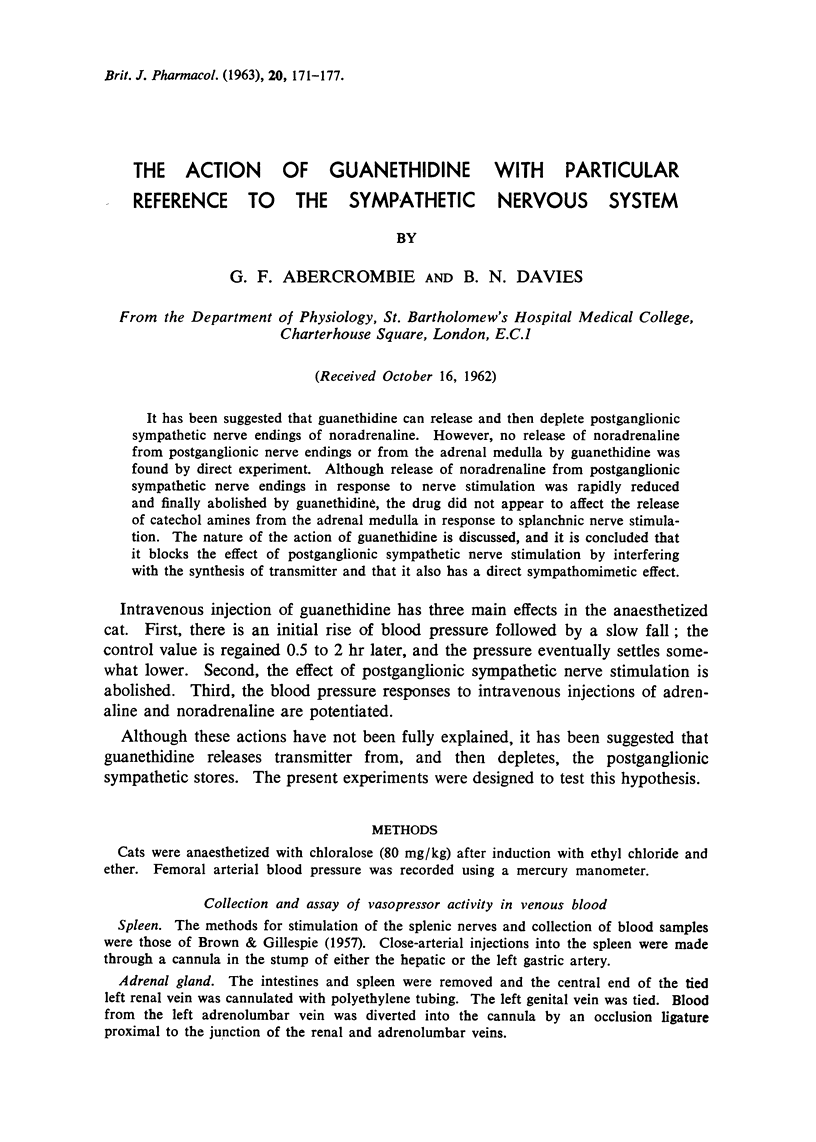
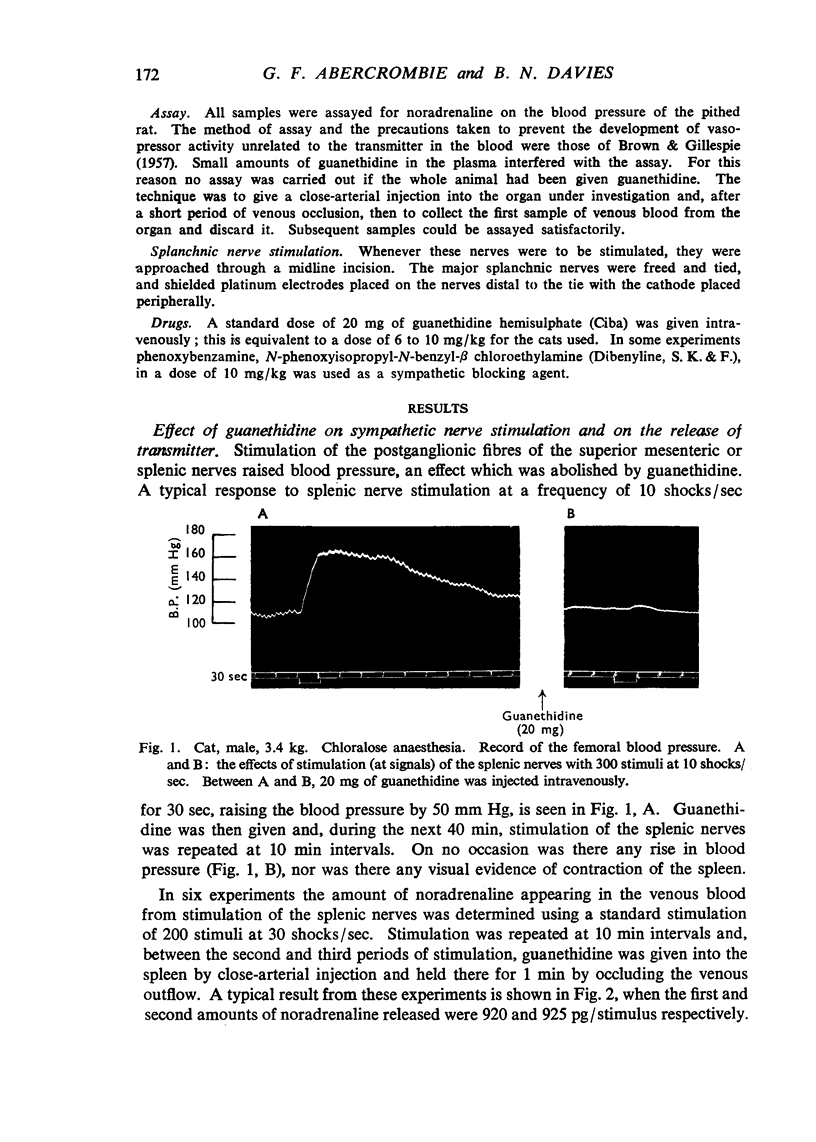
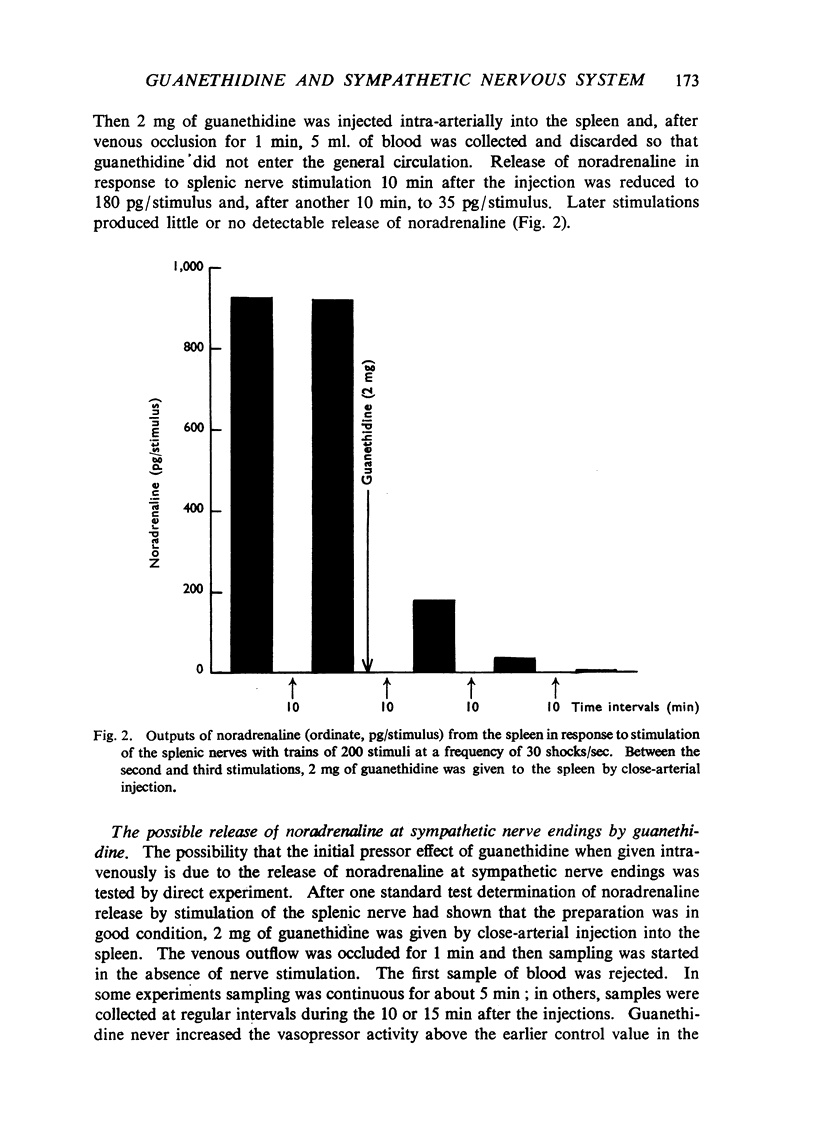
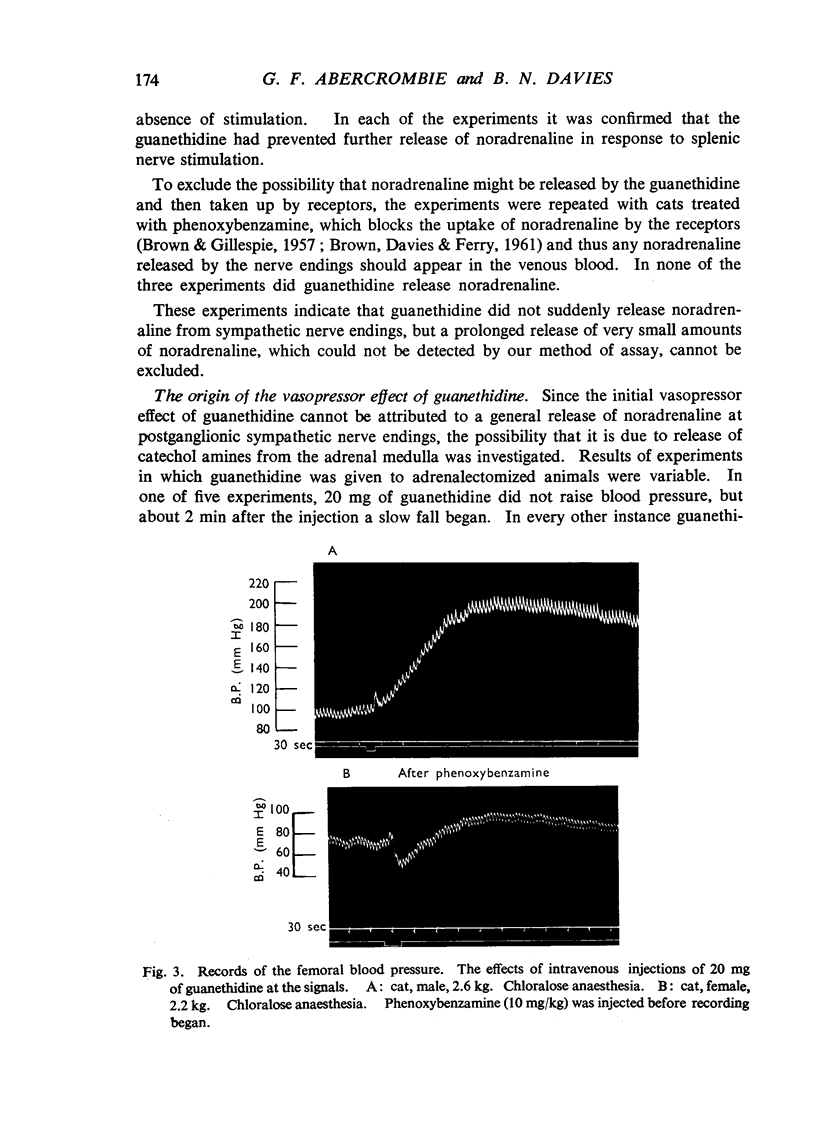
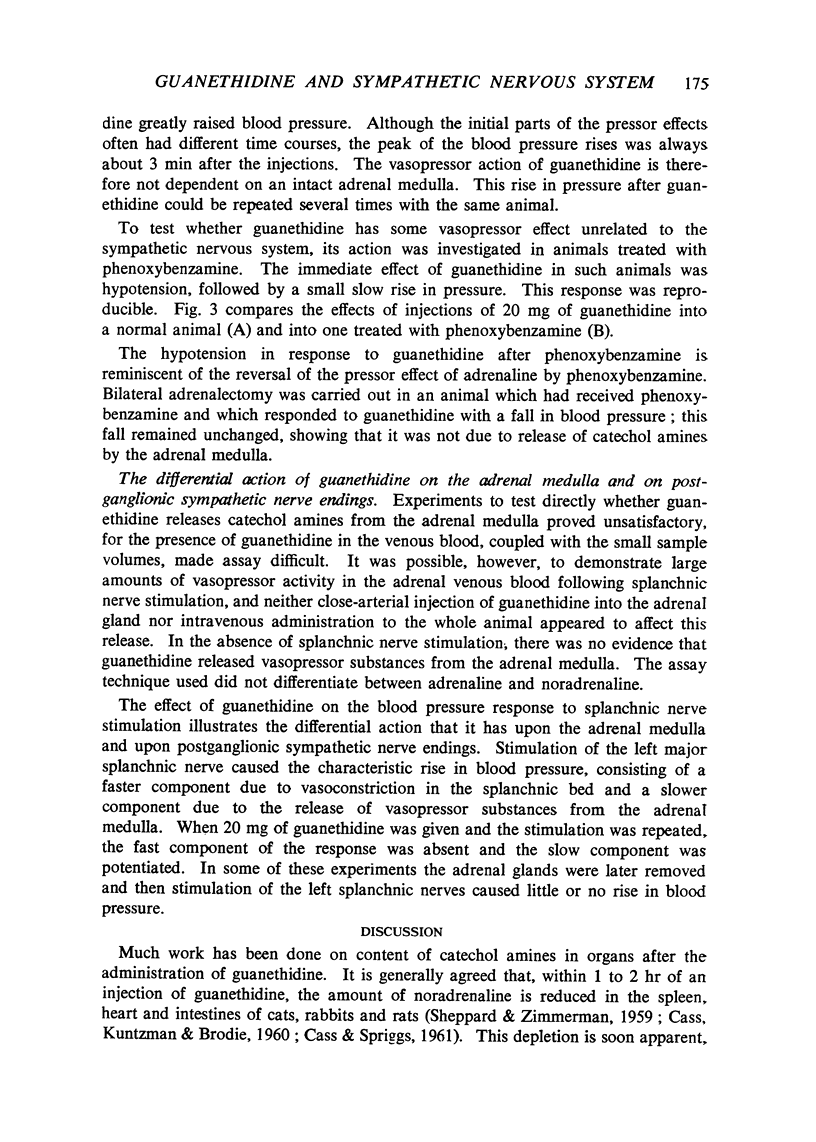
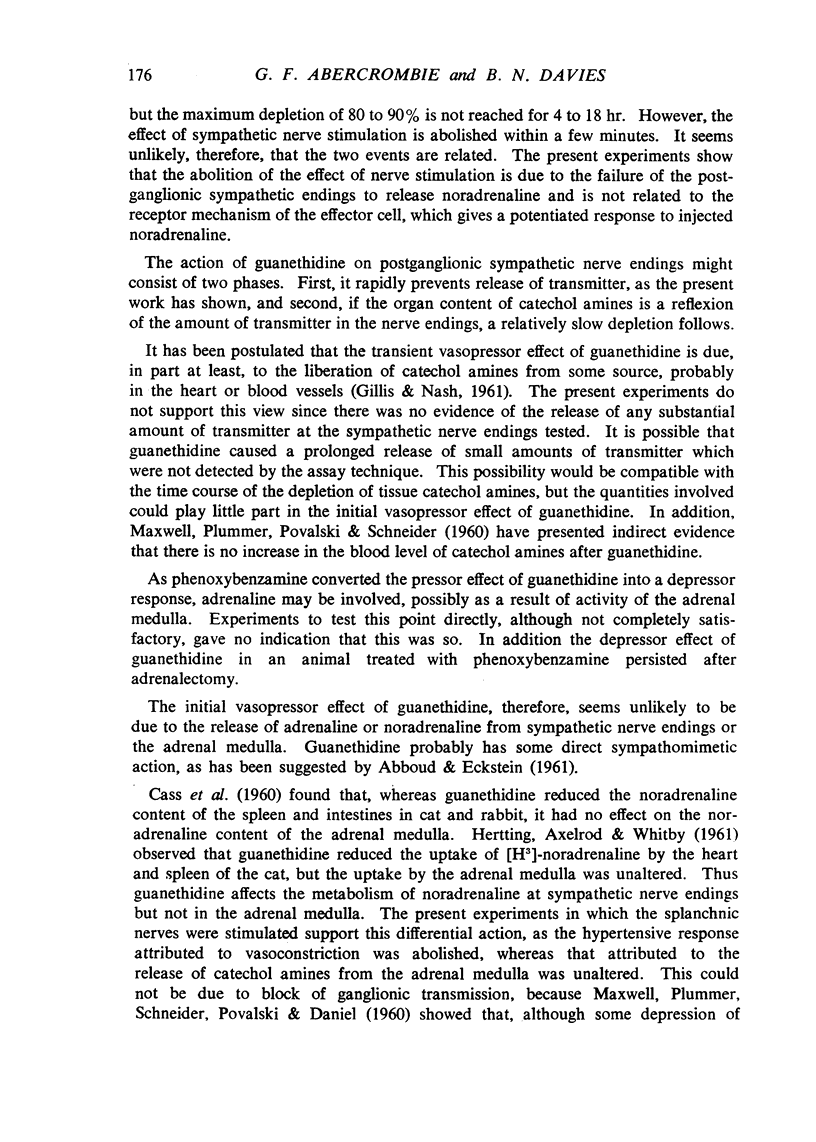
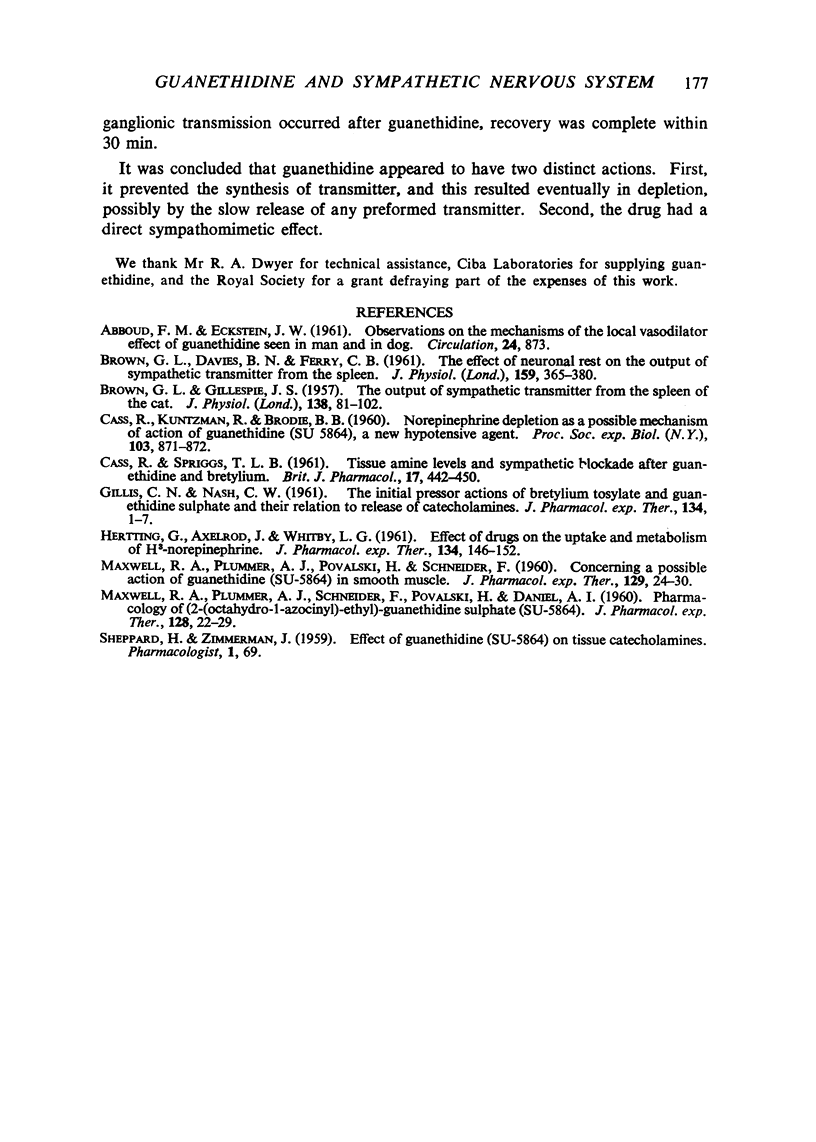
Selected References
These references are in PubMed. This may not be the complete list of references from this article.
- BROWN G. L., DAVIES B. N., FERRY C. B. The effect of neuronal rest on the output of sympathetic transmitter from the spleen. J Physiol. 1961 Dec;159:365–380. doi: 10.1113/jphysiol.1961.sp006814. [DOI] [PMC free article] [PubMed] [Google Scholar]
- BROWN G. L., GILLESPIE J. S. The output of sympathetic transmitter from the spleen of the cat. J Physiol. 1957 Aug 29;138(1):81–102. doi: 10.1113/jphysiol.1957.sp005839. [DOI] [PMC free article] [PubMed] [Google Scholar]
- CASS R., KUNTZMAN R., BRODIE B. B. Norepinephrine depletion as a possible mechanism of action of guanethidine (SU 5864), a new hypotensive agent. Proc Soc Exp Biol Med. 1960 Apr;103:871–872. doi: 10.3181/00379727-103-25702. [DOI] [PubMed] [Google Scholar]
- CASS R., SPRIGGS T. L. Tissue amine levels and sympathetic blockade after guanethidine and bretylium. Br J Pharmacol Chemother. 1961 Dec;17:442–450. doi: 10.1111/j.1476-5381.1961.tb01131.x. [DOI] [PMC free article] [PubMed] [Google Scholar]
- GILLIS C. N., NASH C. W. The initial pressor actions of bretylium tosylate and guanethidine sulfate and their relation to release of catecholamines. J Pharmacol Exp Ther. 1961 Oct;134:1–7. [PubMed] [Google Scholar]
- HERTING G., AXELROD J., WHITBY L. G. Effect of drugs on the uptake and metabolism of H3-norepinephrine. J Pharmacol Exp Ther. 1961 Nov;134:146–153. [PubMed] [Google Scholar]
- MAXWELL R. A., PLUMMER A. J., SCHNEIDER F., POVALSKI H., DANIEL A. I. Pharmacology of [2-(octahydro-1-azocinyl)-ethyl]-guanidine sulfate (Su-5864). J Pharmacol Exp Ther. 1960 Jan;128:22–29. [PubMed] [Google Scholar]


